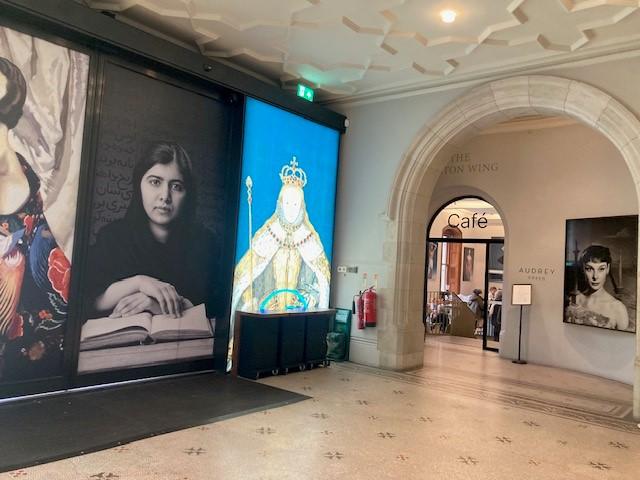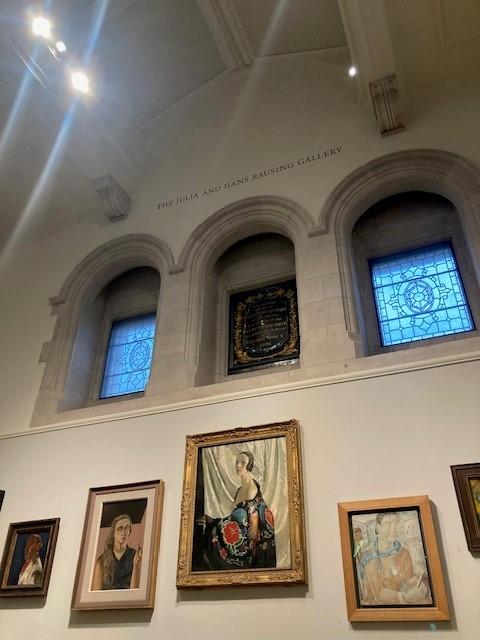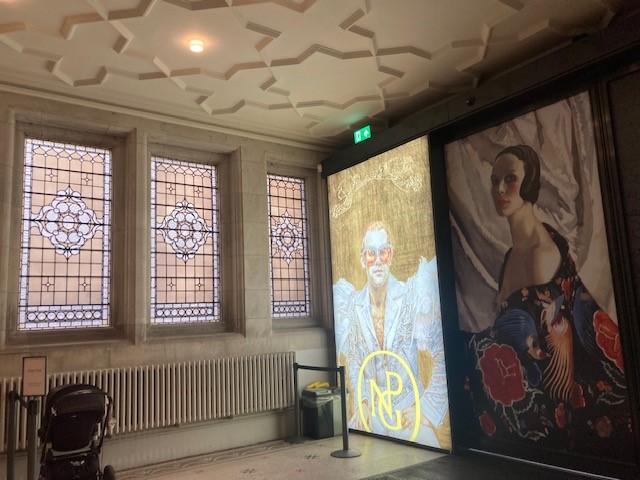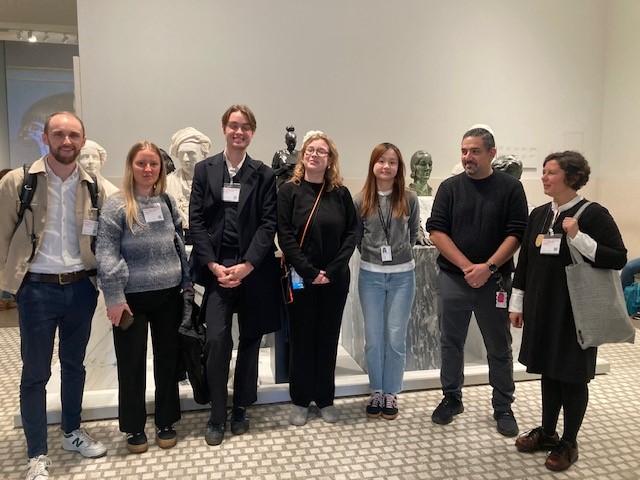All eyes on net zero works at world famous National Portrait Gallery
Iconic site takes steps towards decarbonisation targets using the Low Carbon Skills Fund
Iconic images of the world’s most influential leaders past and present are sure to be scrutinising the net zero steps being made at the famous National Portrait Gallery.
The National Portrait Gallery, London holds the world’s largest collection of portraits and is one of the UK’s most popular attractions for visitors.
Visitors can walk through the centuries - from the Tudor period up to the current day - enjoying a collection that reflects the ever-changing story of a nation.
The London venue houses more 220,000 portrait paintings, drawings and sculptures, photographs, portrait prints, caricatures and more.

Inside the National Portrait Gallery
Credit: Salix Finance
Following the completion of its major transformation project, Inspiring People in 2023, the Gallery is now embarking on an ambitious net zero journey, having been awarded £83k under the Phase 5 Low Carbon Skills Fund.
Run by the Department for Energy Security and Net Zero, and delivered by our teams at Salix, this funding will support the Gallery in its aim to achieve Westminster City Council's guidance of net zero by 2040.
We were fortunate to visit the Gallery to take a closer look at how they are planning their net zero works. Whilst its many visitors were enjoying the many treasures, we were very much focused on how this space can make the best use of energy.
During our visit we met the Gallery project manager for estates and operations, India Mae Picton; estates and operations administrator, Donna Lee; mechanical, electrical and plumbing engineer, Andreas Nicolaides; and Petra Rodrigues, principal decarbonisation programme manager at Max Fordham, whose team has been commissioned by the Gallery to undertake the studies and survey for the building.
The project team also includes consultants Purcell, who worked on Inspiring People and will now be consulting on the architectural heritage of the project, as well as consultants at Fanshawe who will be acting as quantity surveyors.

Pictured from left: The Salix team Bea Golley, Christopher Masters, Milo Challiner with Petra Rodrigues from Max Fordham and India Mae Picton and Donna Lee from the National Portrait Gallery
Credit: Salix Finance
We began our tour at the Orange Street office entrance and were led through the small underground tunnel leading to the vast galleries of the National Portrait Gallery.
India Mae said: “Every day we are aware of the vast significance of this work. Afterall, there are many pairs of eyes on our walls watching what we do!
“We’re committed to seeking a more sustainable and efficient use of resources to work towards achieving net zero carbon at the Gallery, so being awarded the Low Carbon Skills Fund grant is going to make a real impact.”

The Julia and Hans Rausing Gallery at the National Portrait Gallery
Credit: Salix Finance
A heat decarbonisation strategy
The National Portrait Gallery, which sits between the buzzing Trafalgar and Leicester Squares in London, recently completed a transformative redevelopment project, Inspiring People. As well as work involving the re-presentation of its collection and creation of welcoming new spaces, it also included the installation of a low-energy heat recovery ventilation system.
The Gallery will now use the Low Carbon Skills Fund to help create a robust heat decarbonisation strategy, enabling teams to assess and plan net zero works. The project is unique in that the building is entirely run from gas steam boilers, which provide the entirety of the building’s heating, and steam for humidification.
As well as being able to fund a heat decarbonisation strategy, the Low Carbon Skills Fund grant will also be used to undertake a desktop assessment, audit and feasibility study for net zero works, which includes plans to install low carbon heat pumps, electric humidifiers and low temperature hot water systems to minimise the Gallery’s environmental impact.
Petra Rodrigues and her team at Max Fordham have already been working with the National Portrait Gallery on their most recent renovations. This means they have a head start on the heat decarbonisation plans.
Petra said: “We look at the whole building first to help identify where best to focus our efforts.
“We are also working with the Gallery to find other opportunities for decarbonisation and energy efficiency work to help meet its sustainability and net zero targets.

Inside the National Portrait Gallery
Credit: Salix Finance
This phase of funding will also allow India Mae and the team to review existing energy consumption data and organisation infrastructure and then look at an options appraisal for renewable technologies and fabric improvements.
This will be followed by a desktop assessment that will include, heat loss calculations, architectural input, quantity surveyor’s input, and acoustics advice.
The plan will set out a route to decarbonisation over the Gallery that includes financial and time benchmarks.
This combination of activities will outline the baseline energy consumption and emissions for the Gallery. It will help identify areas of high consumption, set out an options appraisal for possible interventions, and identify piecemeal, actionable projects that maximize cost effectiveness.
Overall, the heat decarbonisation plan will set out the relevant issues that must be addressed to deliver decarbonisation.

Pictured from left: The Salix team Christopher Masters, Bea Golley, Milo Challiner with India Mae Picton, Donna Lee and Andreas Nicolaides from the National Portrait Gallery, alongside Petra Rodrigues from Max Fordham. They are photographed in the reception area of the Gallery.
Credit: Salix Finance
A sizeable heritage
As we toured the site, the scale of the Gallery operation became apparent. The size of the rooms, large windows and doorways are truly monumental.
We visited the steam plant room and took a closer look at the grand single-glazed windows and automatic blinds, used to control the exposure of artworks to light as well as heat.
India Mae told us how the Low Carbon Skills Fund would, “help move the Gallery’s ambitious plans forward.”
Salix client support officer Milo Challiner said: “It’s fantastic to visit the wonderful National Portrait Gallery and to talk about the net zero plans for this incredible building.
“It may seem like a daunting task, especially as the building and its amazing collection have such significance. It really does feel like all the historical figures of the past and present are watching with interest!”
It’s a big project with several challenges – the enormity of the building and collection just one of them.
However, failure is not an option. Afterall, we’re surrounded by famous portraits of people for whom failure was never an option.
Look to Nelson Mandella who also has a bust in the main entrance at the Gallery. He said: “It’s always impossible, until it’s done.”
We would love to return to see how the committed Gallery team gets on. They have set themselves a completion date of December 2024 to finish their heat decarbonisation plan.
Thank you to India Mae Picton, Donna Lee, Andreas Nicolaides and Petra Rodrigues for providing a fascinating tour and telling us more about the net zero plans for the National Portrait Gallery.



